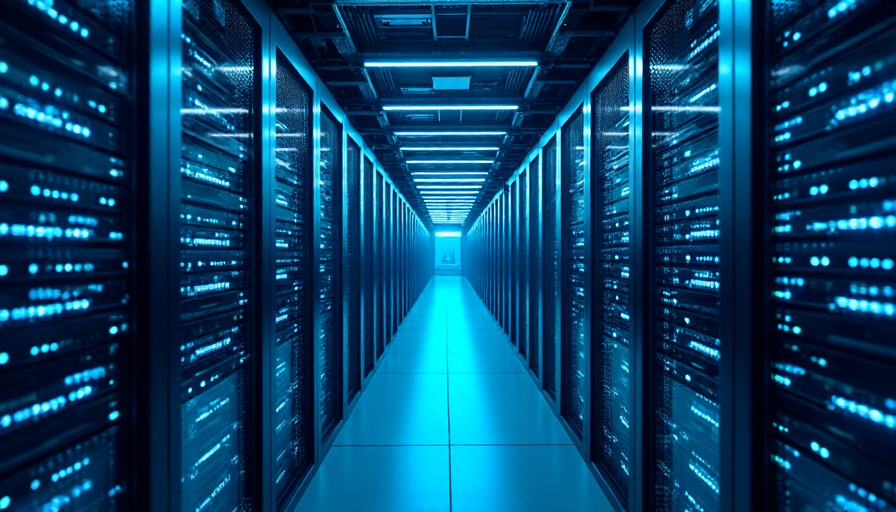
Revolutionizing Computing: How AI is Reshaping Data Centres Worldwide
By the collaborative efforts of leading technology reporters, the narrative of how artificial intelligence is transforming computer infrastructure unfolds. This story isn’t just about faster chips or bigger facilities—it’s an exploration of a paradigm shift that is altering technology, community planning, and environmental management.
The AI Catalyst for Data Centre Evolution
The emergence of AI has sparked a race to build data centres packed with specialized graphics processing units (GPUs). Originally designed for video games, these chips are now the engine behind powerful AI systems. Tech behemoths such as OpenAI, Google, and Meta are investing billions in a global rollout of advanced facilities. These state-of-the-art centres juxtapose innovation with significant electricity and water demands, reshaping not only the tech industry but also local economies and environmental policies.
A New Era of Supercomputing
In this new landscape, data centres have evolved into giant supercomputers, integrating up to 100,000 chips in a single facility. These structures are crucial for crunching the enormous datasets needed to develop AI systems. Sundar Pichai of Google described the rapid transformation as a compression of a decade’s advancements into just two years—highlighting that AI is the true accelerant behind this metamorphosis.
The GPU Revolution
From Video Games to Neural Networks
At the heart of this transformation lies the GPU. Initially built for producing immersive graphics in video games, GPUs have demonstrated an unparalleled ability to execute complex calculations in parallel. This makes them ideal for powering neural networks—the backbone of chatbots and advanced AI applications. With GPUs performing thousands of calculations simultaneously compared to the single operation of traditional CPUs, companies like Nvidia and Google have begun to redesign chip architectures specifically for AI performance.
Changing the Architecture of Computing
With computing power now concentrated in specialized chips, tech giants are radically rethinking data centre design. Engineers are ensuring that GPUs are clustered closely together to maximize data flow, employing new hardware and cabling techniques to keep pace with the demands of AI. This reorganization means that data centres are more than just vast warehouses of computers—they are meticulously engineered ecosystems optimized for speed and efficiency.
Overcoming Power and Cooling Challenges
The High Cost of Advanced Computing
Building these next-generation data centres comes with steep challenges. For instance, OpenAI’s planned facilities are projected to consume more electricity than three million average households. Each GPU consumes up to 1,000 watts—significantly more than the 250 to 500 watts required by conventional CPUs. This spike in energy demand forces companies to secure massive power supplies, negotiate with local utilities, and sometimes even upgrade the electrical grid at great expense.
Innovative Cooling Solutions
As AI systems generate substantial heat, ensuring effective cooling is critical. Traditional air cooling methods are insufficient when thousands of GPUs operate in close quarters. Companies like Google and Cirrascale are now designing innovative cooling systems that circulate water directly alongside chips. In some cases, water cooling is supplemented by giant evaporation towers, a technique that leverages natural cooling processes. However, the trade-offs are significant; while water-cooled systems reduce the load on local water supplies, they also demand more electricity to operate chillers and maintain chemical treatments that prevent electrical conduction.
Global Impact and Future Implications
Economic and Community Transformation
The drive to meet AI’s insatiable appetite for power and space has broad implications. Data centre construction is attracting investments from private equity, galvanizing local job markets, and in some instances, sparking community resistance due to potential environmental impacts. The aggressive capital expenditures—exceeding $320 billion this year in some cases—are not just about technology; they represent a reallocation of resources that is influencing finance, urban planning, and even policy.
From Nuclear Power to Gas Turbines
In their quest for sustainable energy sources, tech companies are exploring various avenues. Notable initiatives include Microsoft’s revival of a nuclear plant at Three Mile Island in Pennsylvania and Elon Musk’s xAI installation of gas turbines in Memphis, Tennessee. These moves underscore a future where finding reliable energy sources might be as critical as developing the AI itself.
Looking Ahead
As the race continues, the future of computing is being rewritten. From the evolution of GPUs and the redesign of data centres to the significant environmental and economic pressures they create, the changes are profound and far-reaching. Mark Zuckerberg’s call to action, "Let's go build!", encapsulates the industry's determination to overcome these challenges.
In essence, the AI revolution is not merely about machines learning to think—it is about reimagining the very framework upon which modern computing is built. As this story unfolds, one thing is clear: the integration of AI into every facet of technology will shape the future in ways we are just beginning to understand.
Note: This publication was rewritten using AI. The content was based on the original source linked above.